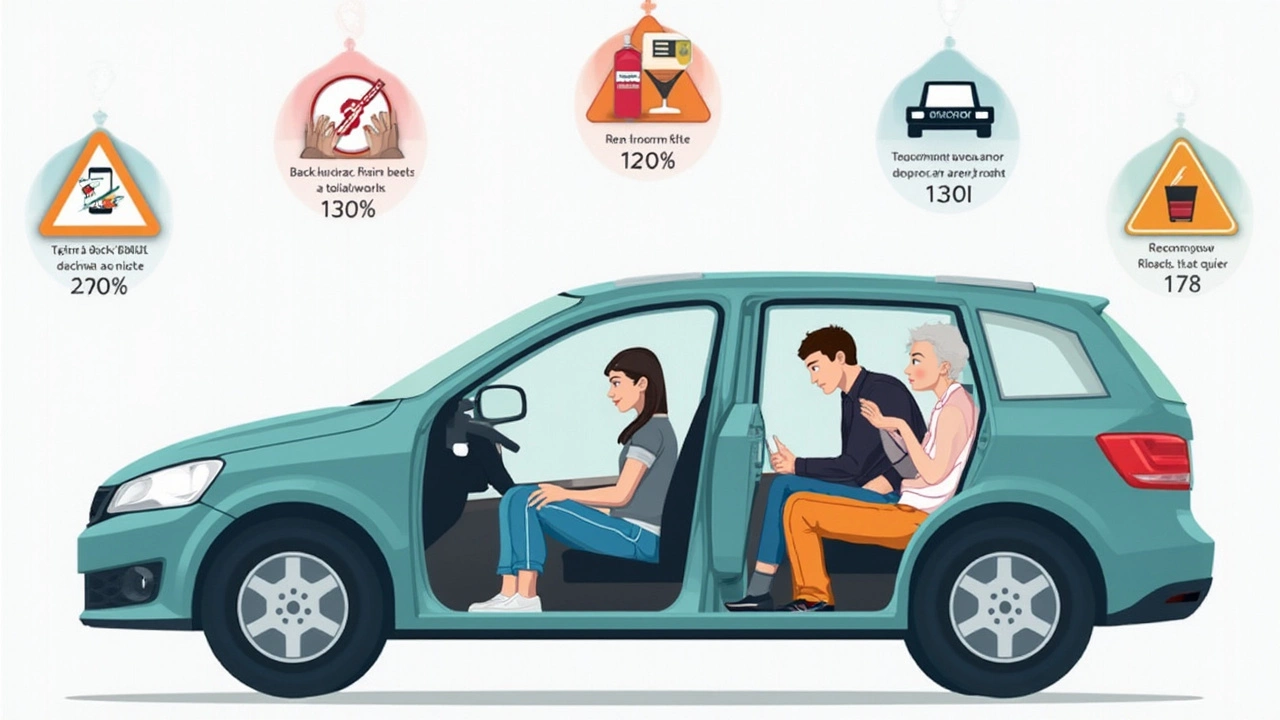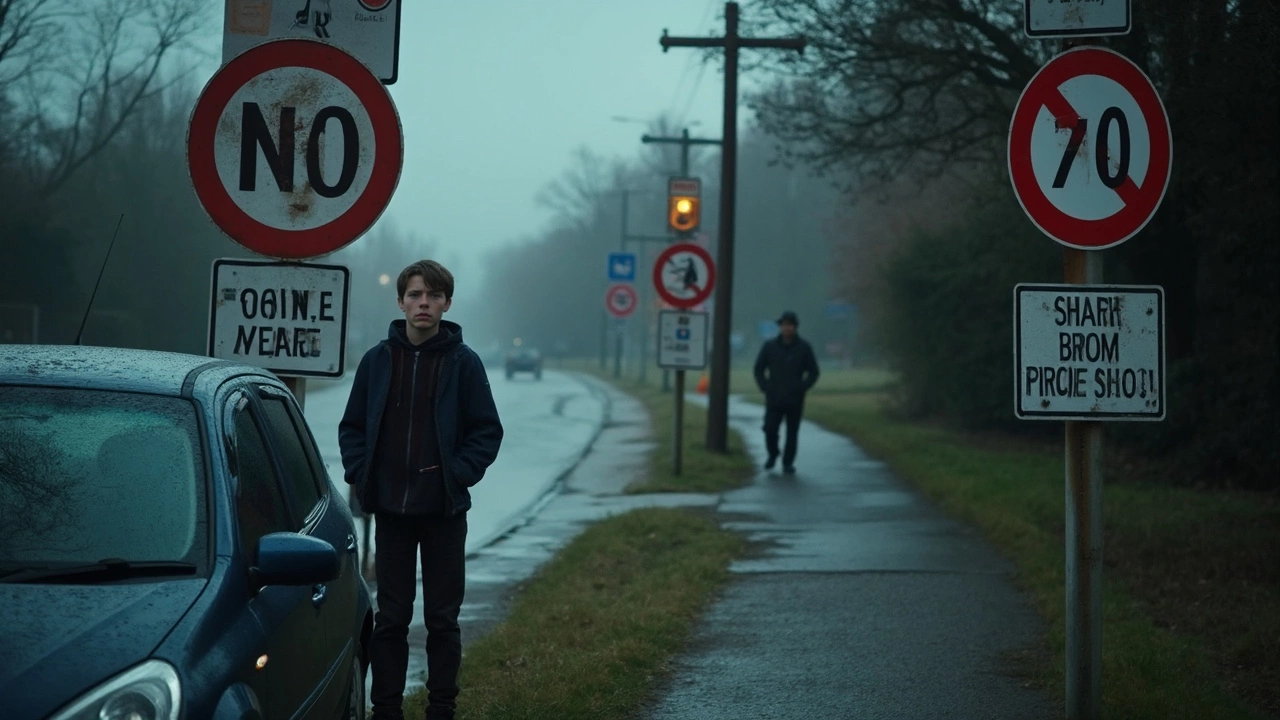You know that feeling when you’re a little nervous getting into a car with a brand new driver? Or maybe you’ve side-eyed that elderly uncle who still clings to his steering wheel at age 85, swearing he can see just fine. Sure, insurance companies have their own spreadsheets, but the numbers on risky drivers might not be what your gut tells you. The everyday reality: being dangerous behind the wheel isn't reserved for just one age group. Still, some ages are way worse than others. Ask an ER nurse what age fills traffic accident beds. Spoiler: It’s not grandpa most of the time.
The Surprising Truth About Driving Risk: It's Not Who You Think
If you guessed teenagers are the riskiest drivers, you nailed it—and not by a little. According to National Highway Traffic Safety Administration (NHTSA) data, drivers ages 16 to 19 have crash rates nearly three times higher than drivers over age 20. And that’s not because they’re driving clunkers or always pulling stunts like a Fast and Furious audition. The numbers are blunt: in the last five years, almost 8% of fatal crashes involved a driver under twenty.
What’s going on here? First off, most teens have barely any seat time; they just don’t have the experience to react well when things get hairy. Their brains also aren’t finished cooking. Science says the part of the brain that controls impulse and foresees consequences—the prefrontal cortex—doesn’t fully develop until the mid-twenties. Mix that with a sense of invincibility or peer pressure (“Let’s see if this thing hits 100!”), and you’ve got a recipe for disaster.
That adds up to scary real-world stats. Take 2019: drivers aged 16-19 were only 3.6% of all drivers, but they made up over 7% of all crash fatalities. Young males lead the pack. One insurance study showed male drivers aged 16-19 are almost twice as likely to get into a wreck as their female peers.
Distraction doubles the risk. The CDC pinned about 39% of high schoolers as phone users while driving. Add things like loud music, sleep deprivation, zero seat belt use—especially at night—and you’ve got teen drivers stacking the odds against themselves. If you want the hard numbers, here’s how it looks in a nutshell:
| Age Group | Crash Rate (per 100,000) | Fatality Rate (%) |
|---|---|---|
| 16-19 | 72.5 | 7.1 |
| 20-24 | 53.6 | 6.2 |
| 25-34 | 39.3 | 5.3 |
| 65+ | 20.1 | 9.4 |
Notice how the riskiest driving age is right in the late teens—and while the fatality rate for seniors is higher (partly due to their frailty), their crash rate lags far behind teens and twenty-somethings.
Does that mean you can relax once you exit your teenage years? Not so fast. The curve drops off, but risk doesn’t vanish. Twenty-somethings—especially the 20 to 24 group—still rack up crashes at a brisk pace. Alcohol and risky behaviors play major roles here. Alcohol-related crash rates peak in this crowd, with nearly 30% of fatalities involving a drunk driver. By your thirties, experience finally pays off, and the numbers look better… until age starts catching up in the other direction.

Why Teens Take More Risks—and How to Keep Them Safer
If you’ve ever sat in the passenger seat next to a new driver, you probably clung to the handle above your window. There’s a reason programs like graduated driver licensing (GDL) started popping up across the US. States that restrict night driving and set firm limits on who can ride with young drivers cut crash numbers by as much as 20%. The system—no unsupervised driving after 10 p.m. for the first year, only one non-family passenger allowed, and no phone use—works because it gives teens the space to slowly learn what can go wrong without the full brunt of real-world chaos.
You might think most teens ignore these rules, but data says otherwise. In Florida, for example, after strengthening GDL laws, fatal crash rates among 16- and 17-year-olds fell by almost 31% in five years. So yeah, boundaries and rules aren't just parental nagging—they’re literal lifesavers.
Still, if your kid is learning to drive or you remember your own nerves gripping the wheel at sixteen, it helps to break down some pinpointed tips that actually work:
- Practice, practice, practice. The more hours behind the wheel (supervised), the less likely new drivers are to crash their first year solo.
- Limit nighttime driving. Half of teen crash deaths happen after dark.
- Talk openly about distractions. Most teens admit they’ve texted while driving, even knowing it’s dumb and dangerous.
- Keep the number of teen passengers low. The more friends in the car, the higher the crash odds.
- Seat belts save lives—remind teens until you’re blue in the face. In fatal teen crashes, over 50% weren’t buckled up.
If you want to stack the deck for safer roads, the most effective place to start is right where inexperience and overconfidence collide: those first few years of driving. Real talk beats scare tactics every time—share stories, show the stats, and keep the conversation alive.
And yes, technology helps. Modern cars pack sensors, auto-braking, and even “teen driver” software that sets speed alerts for young drivers. But don’t count on it as a fix-all; distractions are just a thumb tap away on any phone. Tech makes bad habits easier to spot, not easier to break.

The Other End of the Spectrum: When Does Risk Creep Up Again?
So, what about older drivers? Once you get past middle age, crash rates start to creep up after 65, and by the time someone hits their eighties, the fatality rate inches up even more. But again, it’s not because these drivers are wild behind the wheel. It’s just that age brings slower reflexes, worse eyesight, stiff joints, and sometimes medications—and when accidents happen, seniors’ bodies just don’t handle them as well.
Still, seniors drive less and stick to routes they know. The highways at rush hour aren’t usually packed with retirees. But when they do crash, the consequences often turn out worse. That’s why some states require vision tests—or even mandatory retesting—once drivers hit a certain age. Not all older drivers are unsafe, though. Plenty take pride in being careful. If you’re getting up there (or your parents are), check out some ideas for staying sharp behind the wheel:
- Get regular eye exams—every year counts when it comes to spotting hazards in time.
- Go for daytime drives more than night. The glare of headlights and night vision problems factor into many older drivers’ crashes.
- Be honest about your meds—some can make you drowsy or slow to react.
- Take a “mature driver” safety course, even if you think you don’t need it. They’re packed with current rules and local tips.
- Talk with family if you notice trouble merging, parking, or getting startled by sudden traffic changes. It’s better to plan now than to face a crisis later.
Some older drivers notice their reaction time isn’t what it used to be and self-limit: drive less, avoid highways, never drive in bad weather. That’s smart. The goal is not to yank keys away; it’s to keep people mobile and safe as long as possible.
Compare that to teen drivers: older adults usually have caution and experience but lack the quickness to handle the unexpected. Teens think they can handle everything, but they haven’t lived through those heart-pounding close calls. Both ends of the spectrum deserve patience, resources, and real talk instead of just letting insurance premiums or arbitrary age rules decide when it’s time to hand over the keys.
If you’re curious about the rough odds for different age groups, here’s a quick view—real numbers, not guesses:
| Driver Age | Total Miles Driven (billions/year) | Crashes per Million Miles |
|---|---|---|
| 16-19 | 96 | 3.5 |
| 65-74 | 128 | 1.4 |
| 75+ | 45 | 2.0 |
The numbers make it clear: the youngest segment is way out in front for danger per mile driven. But as experience grows, risk plummets—until human frailty swings things back up later in life.
What about that big group in the middle? Drivers from their late twenties to their early sixties are, by the data, the lowest risk drivers on the road. They crash less often, survive incidents better, and have developed the level-headedness that only comes from not wanting your insurance payment to feel like a second mortgage. Plus, these drivers adapt fastest to new safety technologies and changing rules. But don’t get too comfortable—distraction and drowsy driving remain hazards for everyone.
So is there a magic age when driving is truly safe? Not really. But knowing which ages draw the shortest stick can help families, policymakers, and drivers themselves take the smartest possible steps for staying safe—and keeping the drive ahead as smooth as possible.

